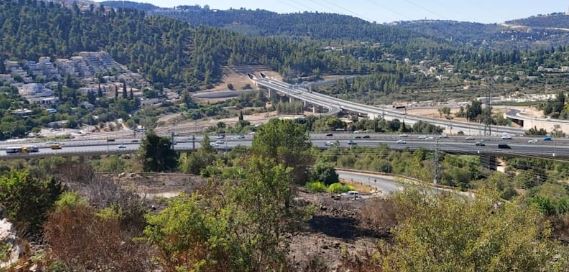OCTOBER 5, 2011
Jews around the world recently observed Rosh Hashonah––two days of prayer and feast, solemnity and celebration, in recognition of God’s creation of and dominion over the world. Immediately following Rosh Hashonah is Tzom Gedaliah, a day of fasting, the day that Gedaliah ben Achikam was murdered. Gedaliah was the leader of the Jewish remnant in Israel after the destruction of the first Beis Hamikdash (Holy Temple). His death extinguished the flicker of hope of continued Jewish autonomy in Israel.(1)
The mourning of Tzom Gedaliah stands in stark contrast to the joy of Rosh Hashonah. To some extent, it seems to be overshadowed by Rosh Hashonah preceding it and the Day of Atonement (Yom Kippur) which follows. In short, Tzom Gedaliah seems out-of-place. But perhaps there is a deeper connection between Tzom Gedaliah and the Yomim Noraim (Days of Awe).
Rabbi Samson Raphael Hirsch has a novel perspective on the Fast of Gedaliah. He explains as follows:
“Gedaliah understood well the task of Israel in their relationship to the nations into whose hands God had given them––to be naught but willingly obedient, showing by this attitude surrender to God and acknowledgement of the power which God used in chastisement––to yield readily to the Divine scheme which God had brought to fruition by means of the Galuth [exile]––to be good, loyal and useful subjects and compatriots of king and country and to leave it to God to incline the hearts of princes and peoples to lovingkindness so that they might be mindful that suffering man was their conquest, and might learn to heal the wounds which they themselves had inflicted . . . .
“But ‘the remnant of the people’ that stayed behind could not rise to this willing, ready yielding to the Divine scheme. Ishmael, son of Nethaniah, cursed be his memory, arose and, spurred on by jealousy and foreign influence, ignoring the will of his overlord, the King of Babylon, and in defiance of him, treacherously killed Gedaliah and all the Jews and Chaldeans that were around him. And yet those who remained, although not of such a wicked disposition, still shared a deep-rooted tendency not to submit to God’s guidance, and, although robbed of all outer independence, wanted to establish their affairs upon a basis of human independence. This became manifest again in the opposition . . . to God’s command, declared to them by the mouth of Jeremiah, to wait for the clemency of Nebuchadnezzar . . . and to remain in the land and be obedient, submissive subjects. The downfall of all of them . . . was the result of their folly which would recognize as God’s will only that which coincided with their own immediate wishes.”(2)
Rabbi Hirsch concludes by stating the lesson to be learned from Tzom Gedaliah:
“Throughout the many centuries it proclaims to the generations of Israel the warning: ‘Remain true to the land which has accepted you, to the Ruler Who protects you! It is God Who leads you everywhere and is with you everywhere. In this great trek through the wilderness, too, God goes before you unseen and points out to you where to stay and which places to avoid. Give yourselves up entirely to Him and show this surrender by loyal attachment to your protecting Ruler and Realm and in resigned obedience even to your oppressors. Thus will He incline the their hearts to lovingkindness and the length of your suffering will be eased.’” (3)
Of course, it is Hashem’s desire that we cleave to His Torah despite the hardships and temptations imposed upon us by the galus (exile). Nevertheless, we must do so in accordance with the laws of the countries in which we reside. That, as Rabbi Hirsch explained, is one of the purposes of exile: to recognize that it is God who placed us in the position we are currently in and that He alone can redeem us. Only by being obedient to the governments that rule over us do we show that we accept the All-Knowing’s scheme.
This idea applies no less to the Jewish communities of today than it did to the generation of Gedaliah. Practically speaking, we cannot disobey traffic laws in order to get to minyan on time. We cannot cheat on our taxes in order to have more money to support Torah learning. We cannot fool ourselves into thinking that we are furthering God’s will, when in fact we are disobeying His command.
When viewed in this light, the incongruity between Rosh Hashonah and Tzom Gedaliah disappears. In fact, the two complement each other. Rosh Hashonah is the day on which we declare God King of the Universe. We submit ourselves to His reign and pray that He soon finalizes the Divine plan of world history, that He will reveal His Kingship to all of His creations.(4) But on Tzom Gedaliah we acknowledge that, as a nation, we have actually failed to live up to our pledges. We have not, in fact, completely given ourselves over to Divine Providence; we have not yielded to the His scheme. Because exile, just like redemption, is the intricate work of God’s hand. Only if we accept it upon ourselves by abiding by the laws of the countries in which we dwell will Hashem lead us to the end of galus. May He do so speedily and in our days.
Footnotes:
(1) Rambam, Hilchos Ta’anios 5:2.
(2) R. Samson Raphael Hirsch, Horeb, ¶ 237 (Dayan Dr. I Grunfeld, trans., Soncino Press 1962).
(3) Id.
(4) “Let everything with a life’s breath in its nostrils proclaim: ‘Hashem, the God of Israel, is King, and his Kingship rules over everything.’” Mussaf for Rosh Hashonah (translation from the Artscroll Machzor).
From Jewish and American Law, here.



